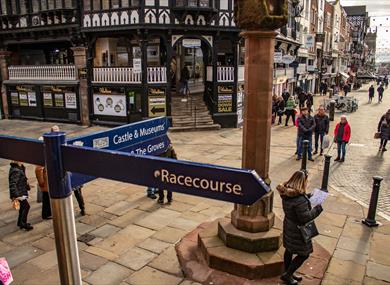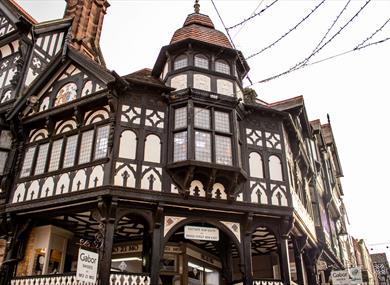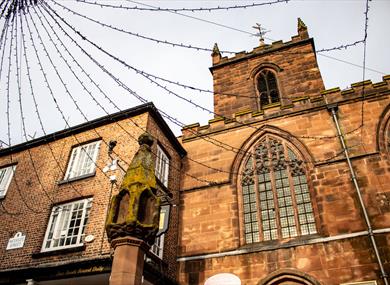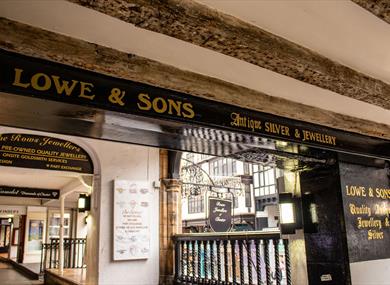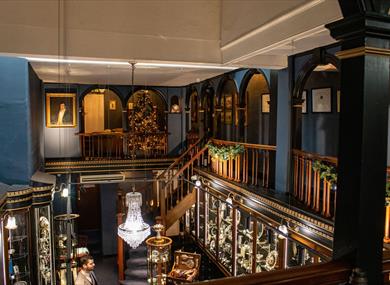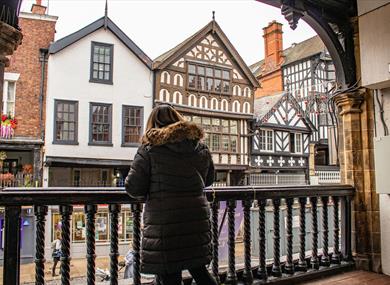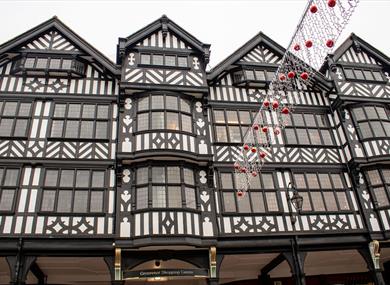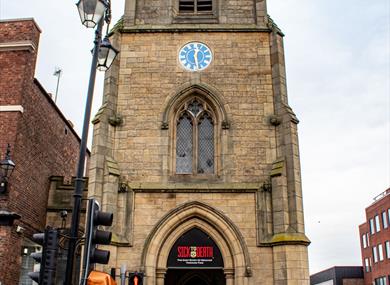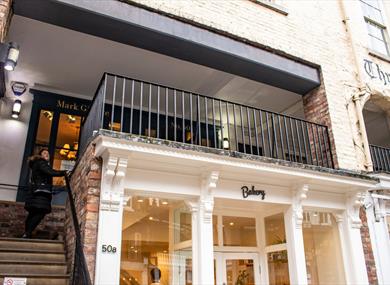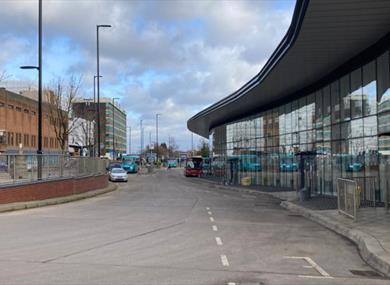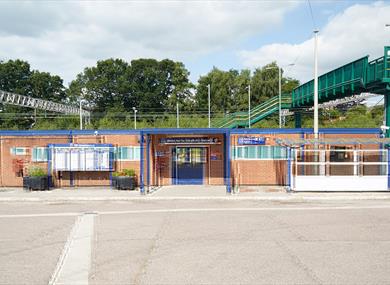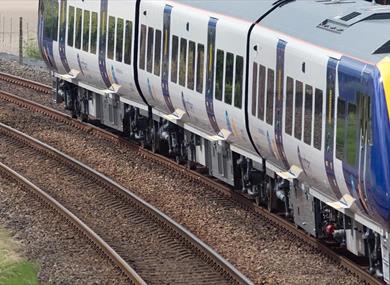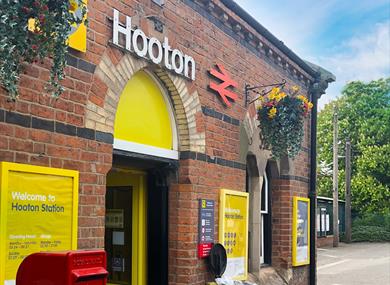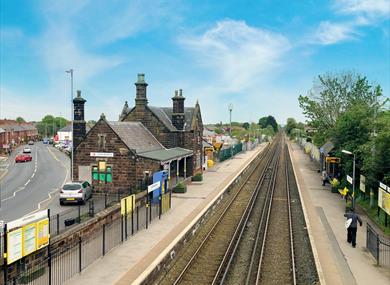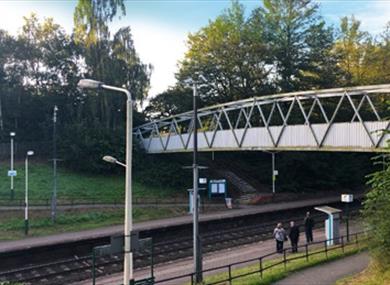You are standing at the Eastgate Corner of The Cross, where the old city’s four main streets converge. This was the heart of Roman Chester – the ancient fort is buried beneath your feet – and it has been an important meeting point for centuries.
Now study the grand architecture of the Eastgate Corner and the opposite Watergate Corner. The glorious black-and-white Eastgate Corner is one of Britain’s finest examples of Tudor Revival architecture, popularly used throughout The Rows and the wider city. Go down to the street momentarily to take in its full effect. Watergate Corner is quite different, dressed in stone and diapered brick with Baroque and Renaissance flourishes. Yet, both designs were the work of the same Victorian architect, Thomas Lockwood, for the 1st Duke of Westminster, and constructed within the same decade at the end of the 1800s
The north side of the square is dedicated to the hefty red sandstone church of St Peter’s. Note its entrance is at Row level. Some think that this is because it sits on the remains of the Romans’ headquarters building.
Turn now to see the shops that wrap around the Eastgate Corner of the Row and you’ll discover a miniature jewellery quarter. Chester is famed for its silver, first made here in the 1570s. The city was one of just a few places in the country to have an Assay Office, which finally closed in 1962. There are several longstanding independent jewellers in the city and here you’ll find some of them, including Lowe & Sons (no 11), one of the families that dominated silversmithing since the Victorian era, and Powells (no 2 and 3 Bridge St Row), the city’s oldest family-run antique jeweller
Step inside the beautiful Victorian interior of Lowe & Sons and climb the stairs to browse the jeweller’s private museum. It displays some fascinating exhibits and stories from the firm’s 250-year history, including the tale of a curious connection with the ill-fated passenger liner RMS Titanic.
Continue south along this lively Row, browsing its boutiques as you go. Perhaps even pause to take a seat on one of the stallboards – the large slabs of wood, tile or stone between the balustrade and the passageway – that have been turned to use as outdoor terraces by some of the cafes.
You’ll pass the grand Edwardian-era St Michael’s Arcade, which is an entrance to the Grosvenor Shopping Centre, and through the 17th-century, half-timbered St Michael’s Rectory (no 43).
The Row finally ends at St Michael’s Church, a 15th-century place of worship that was largely rebuilt in Victorian times. It’s now the quirky museum, Sick To Death. The Rows on both sides of this street once continued towards the River Dee but those structures have been lost in time, except for a few architectural clues.
So cross Bridge Street and return to Row level at the Three Old Arches for the next part of our circular journey through the Chester Rows.


 to add an item to your Itinerary basket.
to add an item to your Itinerary basket.










